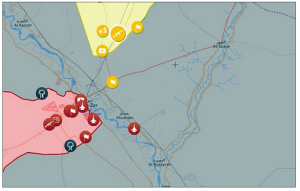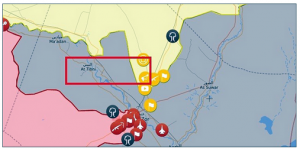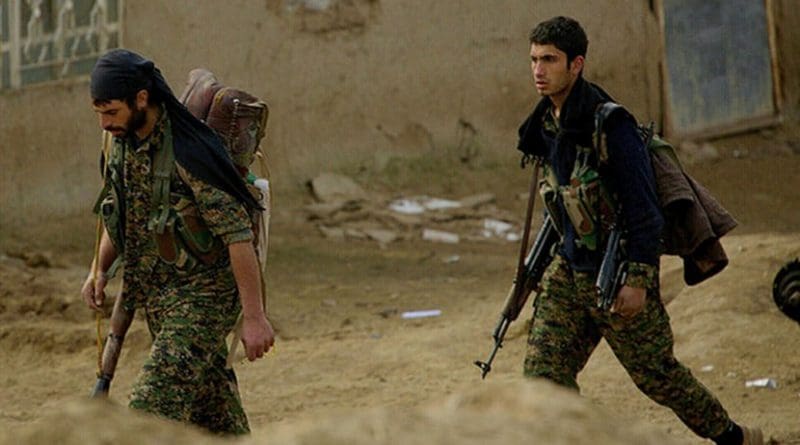How Deir Ezzor, Former Home Of India–China Cooperation, May Become Final Battle For Islamic State – Analysis
By Observer Research Foundation
The post-ISIS scenario for Deir Ezzor is yet to be identified, and that is perhaps true for the entire state of Syria.
By Kabir Taneja
The Syrian armed forces recently made significant breakthroughs in the central Syrian region of Deir Ezzor, a sparsely populated region consisting mostly of barren dessert, and majority of the country’s oil deposits. The Syrian army’s breakthrough in unlatching the Islamic State’s (IS) three-year long hold on the region brings the government of President Bashar al-Assad to possibly the last territorial stronghold of the proto-state within Syria.
The Syrian Army along with military support from Russia, and as per some reports, Shiite militias backed by Iran are making headway in dislodging ISIS from its last geographical bastion of influence in an effort to decontrol all of Islamic State’s claimed land boundaries. If success is achieved, ISIS will be forced to retreat into its original role that of a guerilla militia, without holding much control of land or population. Over the past 24 hours, Russian air strikes have reportedly killed 34 civilians around the Euphrates River as Assad’s soldiers move closer from the South and East, while the Syrian Democratic Forces (SDF), a multi-ethnic alliance largely staffed by the Kurds (some data says Arab fighters outnumber the Kurds) and backed by the US moves from the north to corner ISIS in the dessert regions.

However, the defeat of ISIS in Deir Ezzor may not see the end of the violence. As the Syrian Army and the SDF move forward, in an event of ISIS’s fall, they will be contested over the governance of land that they have released from ISIS along the way. As Figure 1 shows, the Syrian Army (in red) and the SDF (in yellow) are within miles from each other, focused on one goal for now, that of defeating the Islamic State. This is also the region where significant oil and gas deposits are, also home to some of the older oil smuggling routes that the IS took over as part of the larger control of Syria’s oil and gas fields. While IS was unable to take full advantage of having access to these fields and refineries, due to lack of expertise despite going as far as advertising for posts of engineers at salaries north of USD 100,000 per annum, they still manage to earn nearly USD 1.3 million a day from smuggling oil via running makeshift infrastructure.
This region around the Euphrates river, in peacetime Syria, was also home to a joint India–China cooperation project for exploration and development of oil and gas. In early 2013, a consortium led by India’s ONGC Videsh (OVL) via its fully owned subsidiary ONGC Nile Ganga B.V. and China’s China National Petroleum Corporation International (CNPCI) via its fully owned subsidiary Fulin Investments Sarl built the Al Furat Petroleum Company (AFPC) committing to a 50% stake each. A separate company, Himalaya Energy Syria B.V., was setup in The Netherlands to oversee the project and organise financial transactions for the same. Syrian state companies were the operators of the fields in a deal concluded in 2005. Along with AFPC, India also invested in 60% of Block 24, a developmental block in a deal concluded in 2004 for exploration and production of oil and gas. Activities at Block 24 were suspended in April 2012 while work with AFPC was suspended in December 2012 due to the security situation. The India–Chinese consortium moved its offices to Dubai to monitor future prospects.
Block 24 (see Figure 2) was situated in the midst of the ISIS takeover of Deir Ezzor, and reports from the ground had suggested ISIS was using oil wells there to produce crude petrol and diesel by using primitive refining techniques. While the investments were not very large and did not cause significant financial dents to either New Delhi or Beijing, the two largest import markets for oil in Asia now have significant stakes in peace and security in West Asia despite both having a diverse portfolio when it comes to importing oil and gas. On back of the possibilities of such situations arising, some commentators had worked towards an OPEC like organisation for Asian oil importers, to collectively represent their interests and work towards the commonality of Asian energy security. Of course, with the major Asian oil importers being India, China, Japan and South Korea any attempt to build a broad consensus of the same was a futile exercise.

Both India and China are the two largest importers of oil in Asia, and despite the massive renewable energy push, hydrocarbons are expected to capture significant section of both country’s annual energy pie. Stability in West Asia would remain a critical juncture, and with a receding interest from Western powers in the region, specifically the United States, both India and China may play larger diplomatic roles despite the divergence of interest between the two states itself, and the possibility of more cases such as the recent border standoff at Doklam between the two.
The post-ISIS scenario for Deir Ezzor is yet to be identified, and that is perhaps true for the entire state of Syria. While the Assad government now hold significant chunks of the country back under their governance, a large part in the north currently remains under Kurdish control, who themselves are organising a referendum towards independence on 25 September.
The Kurdistan Regional Government has announced that the outcome would be binding, despite strong criticism from almost all major international actors (meanwhile Moscow has said a referendum reflects the demands of the Kurdish people) and Baghdad calling the move reckless, and threatening with airspace closure. Meanwhile, in southern Syria, US backed and Iran backed militias still battle over control of the Al-Tanf region while the Hay’at Tahrir al Sham, a reminiscent body of Al Qaeda led Jabhat al-Nusra, has been attempting to setup its own micro proto-state around the Idlib region, bordering Al-Bab, where Turkish backed militias control territory in efforts to dislodge the Kurds.

